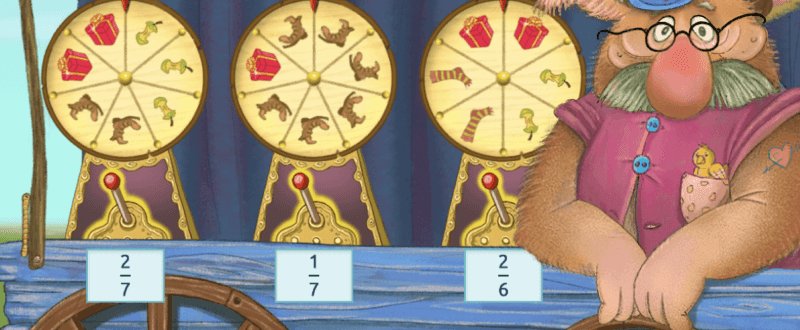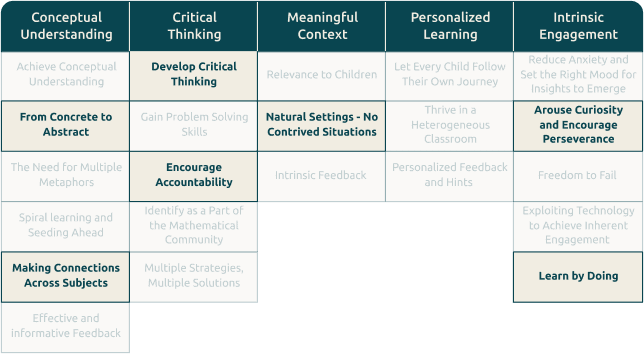
Episode of the week: Spinning Wheels (Calculate Probabilities)
Purpose of the episode
Understand that probability is quantified as a number between 0 and 1 and that the higher the probability of an event, the more likely it is that the event will occur. Understand that the sum of probabilities
Description
In this episode, the child plays carnival games and tries to win prizes. The child gets to choose any spinning wheel they like after considering the probability of winning that each spinning wheel offers.
Here's a Video Walkthrough
What makes it great?
Before talking about probability, users are invited to make a choice based on their intuition.
The results of that action spark curiosity about how to make the best choice in the future within this real life situation. The critical thinking required to make this choice builds children’s capabilities as decision makers.
The child is accountable for their choices.
Whether they win or lose, the host always tells the child whether they made the best choice or whether they got “lucky”. Even if the child chooses the best option, they still have a chance to lose. The child learns by doing, developing understanding of the meaning of probability and intuition around what various probabilities mean in action.
The spinning wheels provide a concrete visual.
Drawing on the connection to fractions, the visual encourages the child to consider the ratio of good options to all options, and since all outcomes are shown, it allows for the insight that the probability of all outcomes together add up to 1. This visualization provides an important bridge from the concrete experience of the event to the abstract representation of the probability.
Consonance with Our Pedagogical Principles

Mathematical Backgroud
Exposure to experimental probability is an important component of mathematical education that is often underrepresented in the grade school curriculum. The intuition and understanding that such exposure builds are among the basic literacy skills of mathematics that serve to support children as they become community members, responsible consumers, and involved citizens–in other words, decision makers. Concrete experience with experimental probability at the primary level is crucial to success in the abstraction of probability in the higher grades as well as to its applications in the sciences. This episode provides that kind of concrete experience –connecting probability with a concrete experiment and providing motivation for children to use their understanding of probability to make the best decision possible.
